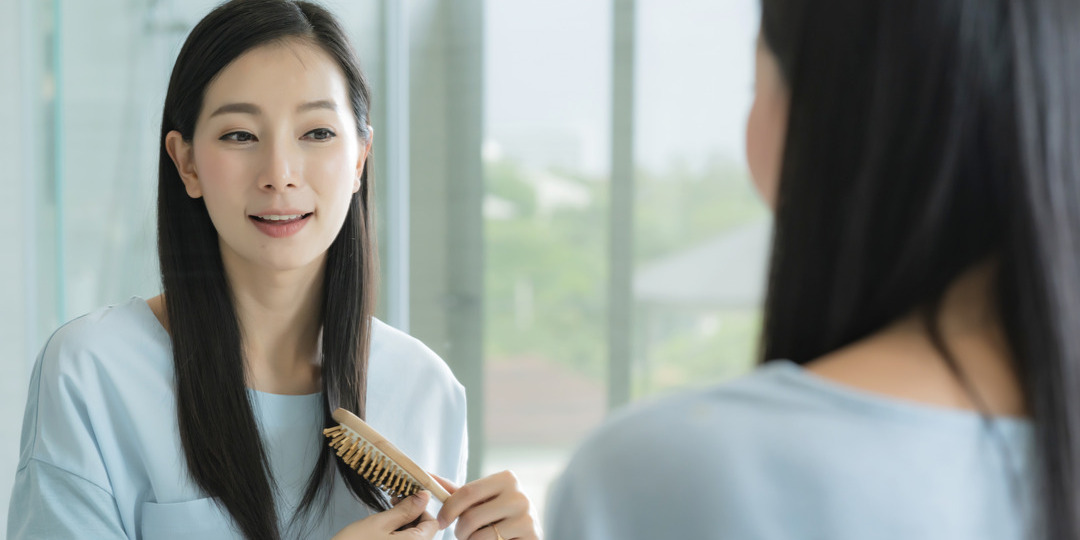
Embarking on the journey to luscious, healthy hair begins with a personalized hair care routine tailored to your unique hair needs and lifestyle. Understanding the nuances of your hair type, alongside factors like lifestyle habits and environmental elements, is crucial in crafting a routine that nourishes and protects your locks.
This guide will delve into the myriad aspects that shape an effective hair care regimen, ensuring your hair looks and feels great.
Understanding Your Hair Type
Understanding your hair type is a fundamental step in creating an effective hair care routine, as hair can be broadly classified into four main categories: straight, wavy, curly, and coily. Each type exhibits distinct characteristics and behaviors, significantly influencing how your hair responds to various products and styling techniques.
Straight Hair
Straight hair accumulates oils quickly, necessitating regular cleansing to maintain a clean and fresh appearance. Lightweight, volumizing products are ideal for this hair type to prevent weighing it down and retain its natural buoyancy.
Straight hair also requires protection from heat and environmental factors, as its smooth texture is prone to damage and shine loss. Balancing moisture is crucial – too much can make the hair limp, while too little can lead to dryness and lack of luster.
Wavy Hair
Wavy hair occupies the middle ground between straight and curly, requiring a careful hydration balance to define its waves without causing heaviness. Lightweight leave-in conditioners and wave-enhancing sprays are beneficial for maintaining its texture and preventing frizz.
Mild cleansing agents are recommended to preserve the integrity of its waves, and occasional deep conditioning treatments help combat dryness and maintain its natural bounce and vibrancy. Enhancing its waves is crucial while ensuring the hair is not weighed down or greasy.
Curly Hair
Curly hair, characterized by lively spirals, needs moisture-rich products to define and enhance its natural curl pattern. Gentle cleansing methods and regular hydration are essential to maintain curl resilience and prevent stripping of natural oils.
Anti-frizz serums and curl-defining gels assist in managing and structuring curls, reducing puffiness and flyaways when applied to wet hair. Regular hair masks and avoiding harsh chemicals are crucial to keeping curly hair healthy, as it is more prone to dryness and breakage, and the occasional use of hair oils can further nourish and strengthen the curls.
Coily Hair
Coily hair, known for its tight spirals, requires deep conditioning treatments for moisture infusion and structural strengthening. Rich, nourishing products like butter and oils are essential, deeply penetrating the hair shaft to provide hydration and elasticity.
Protective styling is essential in coily hair care, guarding against environmental damage and minimizing breakage from manipulation. Regular trims and gentle handling are crucial, as coily hair’s fine, tightly coiled nature makes it vulnerable to knots and damage.
Importance of Knowing Your Scalp Type
Understanding your scalp type is vital to effective hair care, impacting your hair’s health and look. The common scalp types – dry, oily, and balanced – each require a different care approach. A dry scalp can lead to flakiness and irritation, calling for hydrating and soothing products while avoiding those that may dehydrate the scalp further.
On the other hand, an oily scalp benefits from clarifying shampoos and products that control sebum production, preventing issues like excessive oiliness and scalp acne. Correctly identifying and addressing the specific needs of your scalp type contributes significantly to a healthier scalp health environment, promoting healthier hair growth and reducing problems like dandruff and oiliness, enhancing both the health and appearance of your hair, mainly when products are applied to damp hair.
Assessing Your Hair’s Needs
Evaluating the Current Condition of Your Hair
To effectively tailor your hair care routine, assessing your hair’s condition is vital, focusing on damage level, porosity, and elasticity. Damage level indicates the need for repair and protection, porosity affects how your hair absorbs and retains moisture, and elasticity reflects the health and resilience of your hair.
Regular observation of your hair’s reaction to different products and conditions can guide you in selecting suitable treatments and products, ensuring your hair remains healthy and vibrant.
Understanding Common Hair Problems
Recognizing and understanding common hair issues such as split ends, frizz, dryness, and oiliness is essential in adopting the proper care strategies. Split ends, indicating hair damage, require regular trims and protective treatments; frizz, often a sign of dehydration, benefits from moisture-rich products; dryness calls for intense hydration through oils and masks; and oiliness might need more frequent, yet gentle, cleansing.
Tailoring your hair care routine to address these issues helps maintain healthy, well-cared-for hair.
The Role of Genetics and Environment in Hair Health
Genetic makeup and environmental factors significantly influence your hair’s health and needs. Genetics determine essential hair characteristics and predispositions, while environmental elements like climate, humidity, and pollution affect its condition and appearance.
Understanding and acknowledging these factors enables you to adapt your hair care routine to counteract negative environmental impacts and cater to your genetic traits, leading to better overall hair health.
Building Your Hair Care Routine

Essential Steps in a Hair Care Routine
The critical steps in any effective hair care routine include cleansing, conditioning, and treating. Each step serves a specific purpose: cleansing removes impurities, conditioning restores moisture and softness, and treating addresses specific hair concerns through targeted products.
These foundational steps form the basis of a hair care regimen that keeps hair healthy, manageable and well-nourished, catering to its unique needs and preparing it for any additional styling or treatments.
Choosing the Right Hair Care Products
Choosing the proper hair care products is crucial and should be tailored to your hair’s needs. Key considerations include seeking nourishing ingredients that promote hair health and avoiding harsh chemicals that can damage hair.
The selection varies depending on hair types, such as moisturizing products for dry hair and lighter formulas for oily hair. Understanding the role of different ingredients ensures that you select products that effectively address your hair’s unique requirements, contributing to its overall health and appearance while considering your hair texture.
Allowing your hair air dry with the right products can also enhance its natural quality and reduce damage.
The Importance of a Consistent Routine
A consistent hair care routine is essential for maintaining healthy hair and achieving long-term results. Regular use of suitable products and adherence to your hair care regimen allow your hair to continually benefit from the nourishing and protective properties of the products.
This consistency doesn’t imply daily intensive care but rather a routine that fits your hair type and lifestyle, like weekly deep conditioning or a specific schedule to wash your hair. Consistency in hair care ensures ongoing nourishment and treatment, fostering healthier, stronger, and more vibrant hair. Using a wide-tooth comb for detangling can also be part of this routine, especially for those with fragile or curly hair types.
Special Considerations for Different Hair Types
Managing Different Hair Types
If you have straight hair, you might want to wash it more often because it tends to get oily quickly. But if your hair is curly, you can wait a bit longer between washes and use a good conditioner to keep it nice and soft.
Color-Treated or Chemically-Processed Hair
If you’ve colored or treated your hair, use products that won’t wash away the color. Look for ones that say “color-safe” on the bottle.
Also, treat your hair to a deep conditioner now and then to keep it looking fantastic.
Adjusting Your Routine for Climate and Season
When the weather changes, your hair needs a minor adjustment too. In the winter, moisturize your hair with hydrating products, and try not to use too much heat.
In the summer, go for light products and hairstyles to beat the heat and frizz. Your hair will love you for it!
Advanced Hair Care Techniques
Deep Conditioning and Hair Masks
Deep conditioning and hair masks are essential for keeping your hair healthy and looking great. These treatments work like magic to restore moisture and keep your hair in top-notch condition.
Protective Styling for Damage Prevention
Want to keep your hair safe from damage? Try out protective styles like braids or buns. These hairstyles help shield your hair from everyday wear and tear, reducing breakage and keeping it strong.
Scalp Massage for Healthy Hair
Don’t underestimate the power of a good scalp massage. Massaging your scalp feels amazing and promotes better blood flow to your hair follicles, encouraging healthy hair growth and reducing dandruff.
Using Heat Tools Wisely
Use them wisely if you love using heat tools like curling irons or straighteners. Always use a heat protectant spray to shield your hair from damage, and don’t crank up the heat too high. It’s better to style carefully to keep your hair looking fabulous without frying it.
Choosing the Right Hair Products
Picking the right hair products can make a big difference. Look for shampoos and conditioners that match your hair type and concerns. And if you’re using styling products like gels or serums, use them sparingly to avoid buildup, making your hair feel heavy and greasy.
Lifestyle and Diet: Impact on Hair Health
Nutritional Considerations for Healthy Hair
Your diet significantly influences the health of your hair; consuming a balanced diet rich in vitamins and minerals is vital. Nutrients like protein, iron, vitamins A, C, D, E, and omega-3 fatty acids are crucial for hair strength, growth, and luster.
A deficiency in these nutrients can lead to hair loss, brittleness, and a lackluster appearance. Incorporating nutrient-rich foods, such as leafy greens, nuts, seeds, fish, and lean meats, can help ensure your hair receives all the nutrients necessary to remain healthy and vibrant.
The Effect of Stress and Sleep on Hair Health
Stress and sleep have a direct impact on the health of your hair. Chronic stress can disrupt the hair growth cycle, leading to conditions like telogen effluvium (excessive hair shedding).
At the same time, adequate sleep is essential for the body’s regeneration process, which includes hair growth and repair. Implementing stress-reduction techniques like meditation, yoga, or regular physical activity can help mitigate these effects.
Ensuring sufficient and quality sleep each night also plays a crucial role in maintaining the overall health of your hair.
Physical Exercise and Its Benefits for Hair
Regular physical exercise contributes significantly to overall health and extends to hair health. Exercise improves blood circulation, ensuring more nutrients and oxygen are delivered to the scalp, promoting healthier hair growth.
Additionally, physical activity helps balance hormones and reduce stress, both of which can positively impact the condition of your hair. Regular exercise, whether cardio, strength training, or flexibility exercises, can be a valuable part of a holistic approach to maintaining healthy hair.
Common Mistakes to Avoid in Hair Care

- Washing hair too frequently can strip it of natural oils, leading to dryness and irritation. Establish a balanced routine, considering hair type (e.g., oily hair may require more frequent washing).
- Frequent use of high-heat tools (straighteners, curling irons) can cause significant hair damage.
- Avoid tight hairstyles that put excessive strain on the scalp and hair follicles.
- Avoid heavy products for fine hair, which can cause limpness, and overly light products for thick hair, which might be insufficient.
- Frequent coloring, perming, or chemical straightening can weaken hair and lead to breakage.
- Skipping regular trims can lead to split ends and hinder hair growth.
- Brushing hair too aggressively or with the wrong tools can cause breakage and damage.
Final Thoughts
Developing the ideal hair care routine is a personalized journey that demands a deep understanding of and responsiveness to your hair’s distinct characteristics and requirements. It’s important to remember that hair care is not one-size-fits-all; what effectively works for someone else may not yield the same results for you, highlighting the importance of experimentation and patience.
As you navigate this journey, exploring different products and methods, consider the role of high-quality hair care products like those offered by Vitamins Revive. Their range is designed to cater to various hair types and concerns, helping you find the perfect match for your unique hair needs.
Ultimately, the key to maintaining healthy, vibrant hair lies in continuously learning and adapting your routine to suit the ever-changing needs of your hair.
FAQs
How do you choose hair care products that are right for your hair?
Identify your hair type (oily, dry, curly, etc.) and any specific needs (dandruff, volume, etc.), then select products with ingredients designed for these characteristics.
What is an excellent daily hair routine?
An excellent daily hair routine includes using a suitable shampoo and conditioner for your hair type, followed by a leave-in product or serum for added nourishment and protection.
Why is a daily hair care routine important?
A daily hair care routine maintains the health and appearance of your hair and scalp, preventing damage and regularly addressing specific issues like dryness or oiliness.










